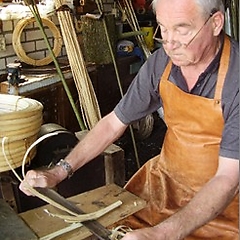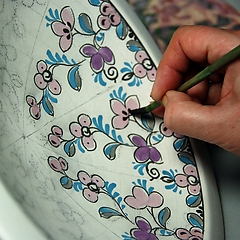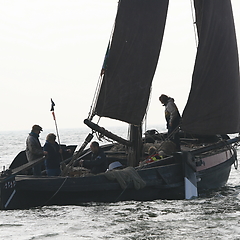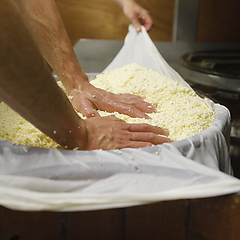Weaving is a technique to produce cloths with simple to very complicated patterns. The principle is that horizontal and vertical threads are interlaced, crossing each other at right angles. The longitudinal threads are called the warp and the threads that are laterally woven into these are called the weft. Depending on the way in which certain warps threads are raised, the pattern develops. By raising the threads, a clear space is created between the warps. The weft threads, or filling threads, are passing through these openings. Traditional weaving is virtually always done on a frame or a loom. For loom weaving next to skills, much knowledge is needed, not only how the operation of the loom, but also about material and weave structures. It is also possible to weave with cards. Many textiles are woven, but nowadays this is done mechanically. Traditional weaving, meaning manually making cloths by weaving, has developed into a form of art and craft in the Netherlands.



